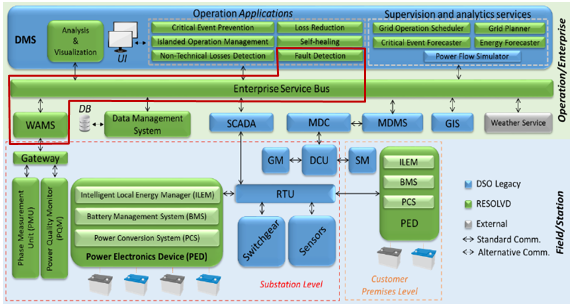WAMS and Fault Detection Application applied to an efficient LV grid monitoring

Traditionally, the Wide Area Monitoring System (WAMS) is referred to a collective infrastructure in charge of managing (i.e. measuring, aggregating and analysing) time-synchronized data (i.e. synchrophasors) coming from distributed sensor devices. It is composed of PMUs, PDCs (gateways), a dedicated ICT infrastructure, and application server facilities for acquisition, analysis, visualization, and archival of data.
In RESOLVD, WAMS developed by CS, provides real time monitoring software capable to compare phase variations among different PMUs remotely located. It aims to early on detect sudden losses or increases of load and generation, and is capable to identify the flow sense and its changes. Implementation of alarms and quick isolation of affected areas prior to self-healing.
University of Girona is The Fault Detection Application (FDA) is an application that automatically detects, diagnoses and locates faults (e.g. short circuits, line imbalances) or other critical events (e.g. unintentional islanding) in the grid using PMU data. Once events are detected, it notifies the DMS. The FDA also automatically detects critical events using SM/GM data stored in the MDMS. The detection of critical events is used to analyse the performance of the critical event prevention application. The FDA is a project developed application. In the following, the specification of functionalities and requirements are provided as identified in general or arising specifically from the use cases.
